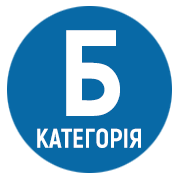FAKE COINS OF THE POLISH KINGDOM IN THE MONETARY CIRCULATION OF THE UKRAINIAN LANDS
DOI:
https://doi.org/10.33402/up.2020-13-75-98Keywords:
counterfeiting, Russian Empire, Kingdom of Poland, sources of study, museum collections, numismatic auctionsAbstract
Being a part of the Russian Empire, in the Kingdom of the Polish were own coins, which in parallel with the money of the national sample also became a prototype for counterfeit manufacturing. The regional peculiarity of the money circulation in the Kingdom of Poland was the presence of coins of neighboring Prussia in cash payments among the locals, which caused the appearance of the counterfeits of various Prussian thalers.During 1820–1830 the Russian authorities ordered the inspection of all Jews returning from England to the Russian Empire through various ports and cities of Prussia to prevent the importation of counterfeits from England. Historical archives clearly demonstrate the involvement of the Polish patriotic anti-Russian secret organizations in the deliberate import and sale of credit bills forgeries inside the Russian Empire.The Polish uprising of 1830–1831 led to a deep social upheaval, as well as a temporary change in the specifics of counterfeiting in the region. Having rebelled against the Russian government, the insurgents needed to make purchases of food and weapons from abroad, so the Poles needed to mint a quality coin. It resulted in a decision to mint an imitation of the Holland ducats in 1831 at Warsaw mint. In the process of investigating the findings of counterfeit coins for the prototype of 10 grosz coins, we also managed to find a coin with the date «1829», evidence about the minting of which during this year is missing in the numismatic catalogs, so we can define it as an old counterfeit.The choice as a specimen for the counterfeiting of the Polish zloty was not a rare oc- currence in Ukraine lands. The archival materials contain numerous testimonies about the production and detection of similar fakes in the Volyn region. The archival materials reveal the characteristics of legal proceedings against counterfeiters at this time in the Kingdom of Poland, whose courts had the right to judge only Poles (not Russians) detained in Poland; Rare and equally interesting are counterfeits of paper money – assignations, credit bills, and money surrogates. Today we have not been able to find evidence of their counterfeiting in the national historical archives of Ukraine, such artifacts we have noticed only on sale at Polish numismatic auctions. The 10 grosz denomination coin of the 1840 year of mint can be confidently called one of the most common coins of its time, including one of the most common counterfeiting prototypes of the Polish coins in the middle 19th century. Counterfeit coins for the prototype of the double-denomination coins produced at the Warsaw mint are mostly noted in the finds of modern Belarus.In contrast to the national coins, the high denomination of the Kingdom of Poland has not only a complex eagle drawing on the obverse but also a portrait of the emperor and a legend on the reverse. This fact made it much more difficult for counterfeiters to work and reproduce it. If at the beginning stage of the entering of the Polish lands to Russian Empire on the territory of the kingdom there was a forging of foreign coins – Prussian thalers and Hollandian ducats, then in the second quarter of the XIX century counterfeiting of the coins of the nationwide sample become more popular.A large number of facts shows that during the Russian Empire, the Polish city of Lodz became the center of counterfeiting, selling manufactured counterfeits mainly in other, even far regions of the whole empire.Based on the material of the newspaper notes, it is also known that the criminals in the Kingdom of Poland were falsified by a fairly wide range of denominations of Russian Empire banknotes: credit bills value of 100, 25, 10, 3 and 1 rubles, as well as 5 rubles coin denominations (half imperial coins), 10 and 20 kopecks. As the prototype of the money of the Austro-Hungarian Empire, there were reproduced by the counterfeiters the banknotes of 5 corona and coins denominations of 1 gulden and 10 kreutzer.
References
Bitkin, V. V. (2003). Svodnyi katalog monet Rossii (Vol. ІІ). Kyiv: Yunona-Moneta [in Russian].
Boiko-Haharin, A. S. (2020). Profesiina prynalezhnist falshyvomonetnykiv v ser. XIX – poch. XX st. Chasopys ukrainskoi istorii, 41, 69–77. DOI: 94.10347/2522-4111.2020.41.1.9 [in Ukrainian].
Boiko-Haharin, A. S. (2017). Falsifikacyia monet i banknot v Polshe do 1917 goda po materialam ukrainskoi gazetnoi periodiki. Forum Numizmatyczne, Pieniadz I Mennice, 103–109 [in Russian].
Boiko-Haharin, A. S. (2017). Polovina matricy falshivomonetchika dlia poddelki rublia Nikolaia ІІ Romanova. Bankaўskі vesnіk, 12 (653), 57–58 [in Russian].
Demmeni, M. (1887). Sbornik ukazov po monetnomu i medalnomu delu v Rossii, pomeshhennyh v Polnom Sobranii Zakonov s 1649 po 1881 g. (Vol. 3). Saint Petersburg: Izdanie Vel. Kn. Georgiia Mikhailovicha [in Russian].
Kolabava, І. N. Skarby falshyvamanetchykau sa zborau numіzmatychnaga kabіneta Belarusskaga dziarzhaunaga unіversіtieta. Krynіcaznaustva і specyialnyia gіstarychnyia dyscyplіny, 4, 55–59 [in Belorussian].
Kolobova, I. N. (1996). Monety vosstaniia 1830–1831 g. na territorii Belarusi. Proceedings of the International Numismatic Conference: Wspolne dzieje pieniadza. Bialorus, Litwa, Polska, Ukraina, (p. 135), Supraśl, 20–22 zhovtnia 1994. Warszawa [in Russian].
Kolobova, I. N. (2016). O poddelke «rossiisko-polskoi» monety Varshavskogo monetnogo Dvora. Forum Numizmatyczne, Pieniadz I Mennice, 1, 94–96 [in Russian].
Kotsur, V. P., & Boiko-Haharin, A. S. (2019). Napoleon russian forged assigna- tions in Naddniprianshchyna (over Dnipro land). East European historical bulletin, 11, 66–77 [in English].
Ohui, O. D. (2004). Falshuvannia monet u period Avstriiskoi ta Zolotoi koronovoi valiut na Bukovyni (na arkhivnomu materiali). Proceedings of the Scientific Conference: R. F. Kaindl i ukrainska istorychna nauka. Mizhnarodnyi naukovyi seminar «Kaindlivski chytannia», (pp. 74), Chernivtsi, 22-23 travnia 2004. Vyzhnytsia: Cheremosh [in Ukrainian].
Orlik, S. V. (2018). Rossiiskie falshyvye kreditnye bilety v Galicii v gody Pervoi mirovoi voiny. Bankauskі Vesnіk, 2, 51–54 [in Russian].
Orlyk, S. V. (2015). Ukrainske povitove misto i velyka viina: prodovolchi problemy ta rist tsin. Problemy ukrainskoi istorii, 23, 114–133 [in Ukrainian].
Orlyk, S. V. (2018). Finansova polityka rosiiskoho uriadu na okupovanykh terytoriiakh Halychyny i Bukovyny v period Pershoi svitovoi viiny (1914–1917 rr.). Bila Tserkva: Pshonkivskyi O. V. [in Ukrainian].
Orlyk, S. V., & Boiko-Haharin, A. S. (2017). Falshyvomonetnytstvo v Ukraini v roky Pershoi svitovoi viiny. Ukrainskyi numizmatychnyi shchorichnyk, 1, 143–164 [in Ukrainian].
Orlyk, V. (2006). Yehor Kankrin i fiskalna polityka Rosiiskoi imperii v Pravober- ezhnii Ukraini v druhii chverti XIX st. Spetsialni istorychni dystsypliny: pytannia teorii ta metodyky, 13, 97–110 [in Ukrainian].
Orlyk, V. M. (2007). Podatkova polityka Rosiiskoi imperii v Ukraini v doreformenyi period: monohrafiia. Kirovohrad: Imeks-LTD [in Ukrainian].
Orlyk, V. M. (2008). Metodolohichni aspekty doslidzhennia problem podatkovoi polityky v ukrainskykh huberniiakh Rosiiskoi imperii u pershii polovyni XIX st. Ukrainskyi istorychnyi zhurnal, 5, 187–195 [in Ukrainian].
Orlyk, V. M. (2010). Dozhovtneva finansovo-pravova literatura yak dzherelo do vyvchennia problem finansovoi polityky uriadu Rosiiskoi imperii kintsia XVIII pochatku XX st. Istoriia nauky i biohrafistyka, 2. Retrieved from http://www.nbuv.gov.ua/e-journals/INB/2010-2/10_orlyk.pdf [in Ukrainian].
Orlyk, V. M. (2011). Derzhavni finansy Rosiiskoi imperii pershoi polovyny XIX st.: stan ta osnovni tendentsii. Naukovyi visnyk Izmailskoho derzhavnoho humanitarnoho universytetu, 30, 96-108 [in Ukrainian].
Orlyk, V. M. (2011). Do pytannia metodolohii doslidzhen problem ekonomichnoi istorii Rosiiskoi imperii. Problemy istorii Ukrainy XIX pochatku XX st., 18, 59–64 [in Ukrainian].
Orlyk, V. M. (2003). Kazenni palaty v systemi finansovoho upravlinnia Rosiyskoi imperii v kintsi XVIII – u XIX st. (na materialakh Kyivskoi hubernii). Ukrainskyi istorychnyi zhurnal, 2, 66–73 [in Ukrainian].
Rafal, J. (2011). Uwagi do artykulu chronologia dziesieciogroszowek Krolewstwa Polskiego z data 1840. Biuletyn Numizmatyczny, 2, 362 [in Polish].
Sereda, A. V. (2015). Oformlenie monet Tsarstva Polskogo v pervoi polovine XIX v. Proceedings of the Scientific Conference: Vosemnadtsataia Vserossiiskaia nu- mizmaticheskaia konferentsyia, (pp. 202–204), Moscow-Kolomna, 20-25 aprelia 2015. Moscow [in Russian].
Sinchuk, I. I. (2007). Falshivyie oloviannyie monety XIX – XX vv. iz Zapadnoi Be- larusi: degradatsyia tekhnologicheskikh traditsyi. Numіzmatika і faleristika, 4, 8 [in Russian].
Terlecki, W. (1962). Polityka monetarna Banku Polskiego w dobie Powstania listopadowego. Wiadomosci Numizmatyczne, 1 (19), 30–35 [in Polish].
Uzdenikov, V. V. (1994). Monety Rossii XVIII – nachala XX veka. Ocherki po numizmatike. Moscow [in Russian].






